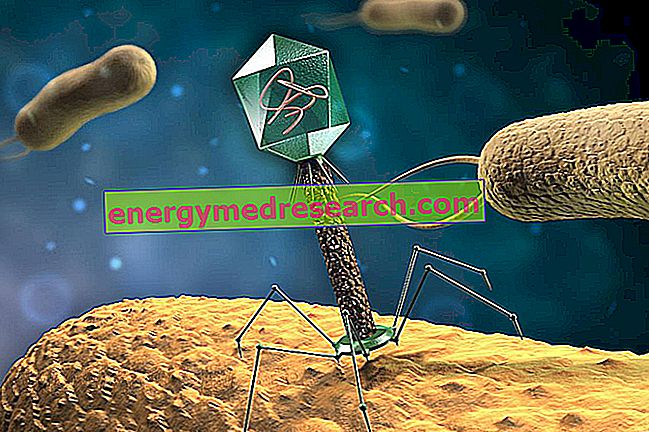
Bacteria also have their natural enemies and very often capitulate to the attack of enemies much smaller than them, so microscopic and simple that they cannot even be considered living organisms. We are talking about some viruses, called bacteriophages, which exploit bacterial cells to replicate themselves. A virus, in fact, unlike bacteria, cannot be considered a living organism, since it is not able to replicate itself; it is said in this sense that viruses are obligate parasites, precisely because they must exploit other cells to reproduce.
When the exploited cell is the human one the viruses create a certain damage to the organism; however, when a pathogenic bacterial cell is exploited for humans, bacteriophages can become allies of our health; and could become even more so in the future, given the growing problem of drug resistance and the consequent bacterial insensitivity to antibiotics.
These "natural drugs" are also particularly cheap, as phages are the largest biological entity on Earth. They are also highly specific, given that each bacteriophage acts in a determined manner on a bacterial species or even towards specific strains; therefore, the mix of phages used to treat a disease must be highly specific for the individual patient, a sort of carefully calibrated cocktail after understanding which bacteria are causing the infection. This hyper-selective approach complicates the therapeutic use of bacteriophages on the one hand, but on the other hand it avoids killing good bacteria, which is a common side effect of traditional broad-spectrum antibiotic therapies. Therefore, the phage action does not destroy the commensal microflora of the intestine and thus avoids the appearance of side effects such as diarrhea and opportunistic secondary infections.
The therapeutic use of bacteriophages developed during the first half of the last century in the former Soviet Union, especially in Georgia thanks to research by George Eliava. In the West, scientific interest in phage therapy was dampened by the advent of antibiotics, but has recently regained vigor precisely because of the renewed interest in alternative therapies. The FDA, for example, has approved the addition of specific phages for Salmonella and Escherichia Coli in various food products. In fish farming, phages are already used today as a valid alternative to the use of antibiotics.
In addition to the bacteriophages in toto, the weapons with which these viruses win the bacterial defenses, for example the lysins able to make breach in the wall of the bacteria can also be employed. Furthermore, genetic engineering techniques have already created "super phages", capable of attacking and lysing more bacterial species.
Regarding health hazards, if the therapy is well balanced these are almost non-existent. The human organism, in fact, is particularly used to having to deal with phages, which are found everywhere, in everything we touch, eat or drink. Furthermore, the expansion of the phages in the human organism depends on the extent of the infectious bacterial population: as the latter decreases due to the effect of the phages themselves, the viruses also decrease their concentration. This, among other things, means that once a dose of phages is injected into the body, these viruses rapidly develop and increase their bactericidal effectiveness over time (as opposed to antibiotics for which booster doses are required). Not only that, the fact that the phages kill the bacterial cell generating cellular fragments makes their action bring the human immune system to activate with greater intensity; just think, for example, of fragments of the LPS (lipopolysaccharide) coming from the degraded bacterial wall.
Potential health hazards include the possible presence of bacterial toxins in the phage preparation and the transfer of bacterial genes between virulent strains. Today, in fact, we know that phages are responsible for most diseases associated with toxins; this is because phages are replicating within the bacterial cell to produce and / or release toxins that cause the typical symptoms of many diseases; this is the case, for example, of pertussis, scarlet fever and cholera. Furthermore, the lysis of some bacterial species can lead to the release of large quantities of endotoxins which, beyond certain limits, go from stimulating the immune system to hyper-activating it, up to giving rise to toxic shock due to the enormous increase in the production of cytokines inflammatory. This obstacle can be overcome through genetic engineering techniques, with the aim of depriving the bacteriophages of the genes necessary for the synthesis of lysine; this also limits the replication of phages, since without lysine the viruses replicated within the bacterial cell cannot escape. The second problem, on the other hand, is solved by avoiding the use of lysogenic cycle phages, as these, as mentioned, could favor the problem of antibiotic resistance rather than solve it.



